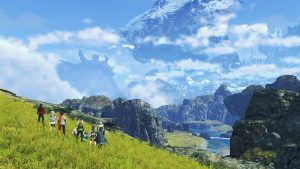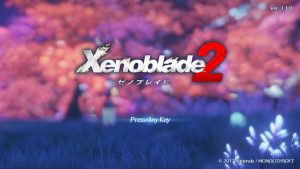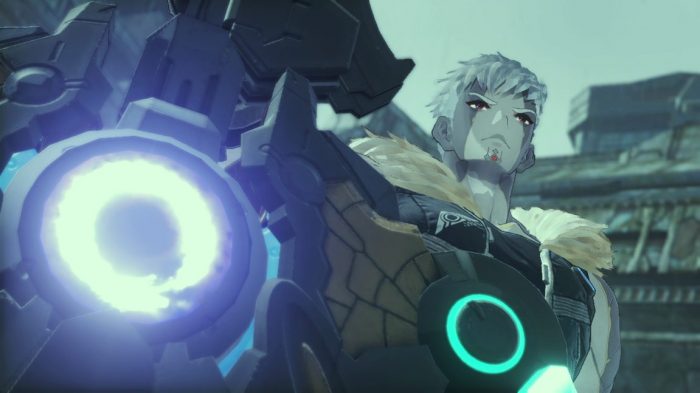
Monolith Soft’s third numbered entry in their open-world JRPG series is one of the biggest and best yet. Part of what makes Xenoblade Chronicles 3 shine is the legacy of the previous games and how well the developer has incorporated not only recurring visual elements of other titles but also gameplay mechanics themselves.
Fans of the previous titles knew we were getting something big with the third game, with numerous story and gameplay trailers showcasing familiar locales and potential returning characters. But Monolith Soft went deeper than that, leveraging their own universe to convincingly build out the conclusion to their trilogy.
Today on Honey’s Anime, we’re diving deep into how Xenoblade Chronicles 3 makes the most of its predecessors, including a brief lore recap that might be useful before you head into the third game.
Spoiler Warning! This article assumes you have played Xenoblade Chronicles 1 and Xenoblade Chronicles 2, and will be talking about each game’s ending and mechanics. There are no spoilers for Xenoblade Chronicles 3 beyond anything shown in official trailers or gameplay videos.
The Road So Far

Let’s step back a little. First and foremost, the Xenoblade Chronicles games have always been heavily story-driven. Though each title has ostensibly been standalone, they’re connected via fleeting pieces of lore that hint at a bigger universe—and in some cases, much stronger ties than you might suspect.
Players of the first two numbered games (and this is your final, last-chance spoiler warning!) will remember that Xenoblade Chronicles 1 and its direct sequel take place after a scientific accident goes wrong. When a mysterious alien artifact—the “Conduit”—appears before Earth, two research scientists begin experiments on the device. Klaus, and his assistant Galea, are sucked into a dimensional portal when an experiment on the Conduit splits the universe in two.
From here, we have the original story of Xenoblade Chronicles 1—where two colossal Titans, each hosting their own civilization—are locked in stasis, having seemingly fought each other to the death. Here we’re introduced to some of Xenoblade’s most beloved races—the fluffy but idiotic Nopon, the winged High Entia, the mech-hybrid Machina, and of course the humble humans (called ‘Homs’ in the first game).
But while Shulk and friends race to defeat Zanza—the godlike personification of Klaus—another story plays out against a different Klaus, in Xenoblade Chronicles 2. In the second game, the guilt-ridden half of Klaus lives on as “the Architect”—also godlike, but shackled to a broken Earth afflicted by the disastrous effects of activating the Conduit.
The Architect used his powers to shape a new world made possible by “Core Crystals”—tiny, powerful representations of biological life. From this grew Alrest, the world of Xenoblade Chronicles 2—and with it came more Titans, along with some new races of people, such as the cat-eared Gormotti, and the Blades—humanoid beings that pair with a compatible “Driver” to act as their weapon.
These two worlds—so separate, yet so intrinsically linked—are set on a collision course with the deaths of Zanza and the Architect, along with the disappearance of the Conduit. This will collapse the universe, merging the two worlds into one again—with potentially devastating consequences.
A World Reforged
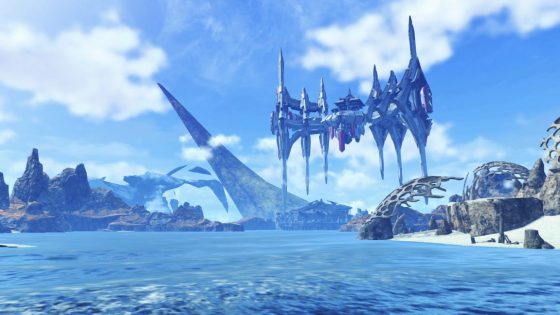
It’s here we pick up the story in Xenoblade Chronicles 3, the latest (and, we think, the greatest) installment in the numbered trilogy. We begin our story on Aionios, a world that appears to be a fusion of the Bionis and Alrest worlds from the previous two games.
Duality, fusion, and eternity are all core concepts in Xenoblade Chronicles 3, and of course, we don’t intend to spoil any of the fantastic plot twists that await you later in the game. What is immediately apparent, however, is that our two universes have merged together but maintain an “opposite” stance to each other.
This is where Monolith Soft works their magic as developers. Although every game in a franchise naturally improves upon the previous iterations, Monolith Soft altered the gameplay systems in a way that directly tied into both the new story of Aionios and the overarching universe itself.
The clever interplay of games and mechanics begins with our setting, and particularly, our playable characters.
Aionios is separated into the two warring nations of Keves and Agnus, each with their own specific races (and, of course, our fluffy Nopon on both sides since they’re in every Xenoblade universe).
Our Keves characters are all from the world of Xenoblade Chronicles 1—we have Noah, a human (or Hom, if you prefer); Lanz, a hybrid Machina; and Eunie, a (probably latter-generation) High Entia.
And over with the Agnus crew, we see Xenoblade Chronicles 2—we have Mio, a cat-eared Gormotti; Taion, a human; and Sena, whose design and accent suggest she’s either descended from a Blade or from Indol.
Xenoblade Chronicles 3 returns to the fabulous regional British accents, and these are also consistent markers of our characters and their lineage. The Urayans of Xenoblade Chronicles 2 make an appearance as a “third party” to this two-player war, with ocker Australian accents that speak to their isolationist history maintained despite the merger of the worlds.
But it’s not just characters—Monolith Soft even modified the gameplay to match the two worlds.
Interlink and Interplay
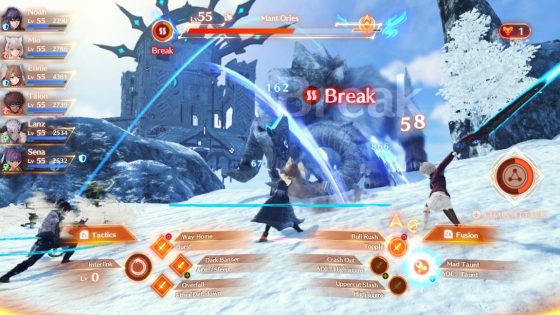
It would’ve been easy for the developers to make a combat system that works one singular way. Certainly, it would save time in design, programming, and testing. But ever loyal to their own universe, and to the central premise of Xenoblade Chronicles 3, Monolith Soft cleverly made sure that both previous games were presented in full.
Take the Arts system—Xenoblade’s main combat system where you auto-attack and use cooldown skills to dish out damage. This system has seen a few changes over the past numbered entries, but in this third installment, both Arts recharging systems are used to represent their nations.
All Kevesi characters—Noah, Lanz, Eunie—have their Arts on a timer, ranging anywhere from a few seconds to half a minute. This exactly matches the same timer system employed in Xenoblade Chronicles 1, where the gameplay encourages you to deploy skills at the right time to deliver consistent Arts damage.
Meanwhile, our Agnian characters—Mio, Taion, and Sena—have their Arts recharged every time they auto-attack an enemy. This is directly pulled from Xenoblade Chronicles 2, where fighting with any of the Drivers required precise timing of your auto-attacks to chain into heavy damage.
These systems come together in beautiful harmony with Xenoblade Chronicles 3’s Fusion Arts system. As your characters master each other’s classes (more on that in our full, spoiler-free review), they’ll gain access to abilities from the other team. For instance, Noah’s primary Arts will be timer-based, but he’ll have access to Agnian arts that are strike-based.
Fusion Arts are deployed by waiting for the timer-Arts and strike-Arts to sync up, whereupon you can deliver extra damage and activate both skills at the same time, before chaining back into more Arts. This ebb and flow are like a mesmerizing dance, delicately balancing two different gameplay systems together.
Sometimes, though, Monolith Soft’s best efforts are the ones you barely notice.
Polar Opposite
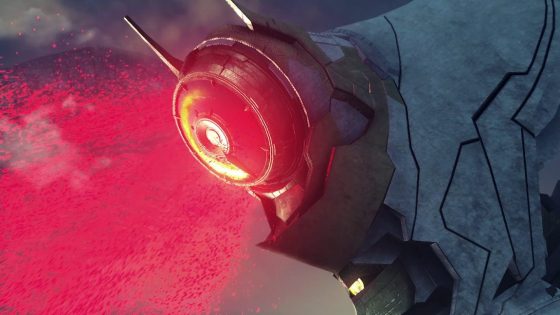
Two universes split apart and are now forced to merge. Two universes that are, in essence, the mirror copy of each other.
As we know from the trailers, Keves and Agnus are locked in a state of eternal war, all to fuel the “Flame Clocks” that, in turn, allow the soldiers to live and fight. All humanoid soldiers are given “Iris” software, seemingly embedded in the side of their heads, that projects holographic information over their vision.
These two details are simple, basic pieces of worldbuilding—and yet even these represent their home universes.
To start, Kevesi and Agnian Flame Clocks fill in opposite directions—clockwise for Keves, counter-clockwise for Agnus. Kevesi soldiers activate their Iris by touching the right side of their head; Agnian troops touch the left side—and of course, the eyes match up when they do this. Nopons, uniquely, cannot use Iris software—because after all, Nopons are joint inhabitants of both universes.
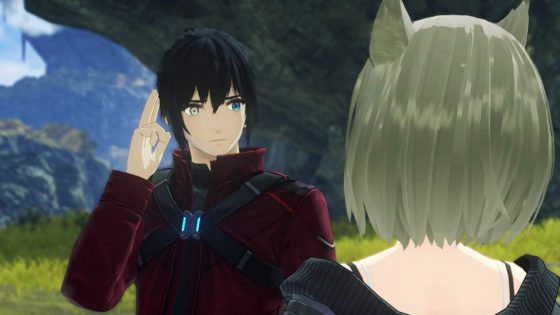
Machine and colony designs hide more connections to their home universes, whether the characters know it or not. The Kevesi employ large battle machines that are almost the spitting image of the Mechonis Shulk fights in Xenoblade Chronicles 1. Meanwhile, the Agnian machines bear a striking resemblance to the enemies of the World Tree in Xenoblade Chronicles 2.
The color design of Xenoblade Chronicles 3 belies more connections to the home universes. The Kevesi Flame Clocks are blue, as are the energy currents powering their machines—a blue that reminds us of both the original Monado and the color of Alvis’s eyes. Although he was never shown in Blade form in Xenoblade Chronicles 2, it was widely believed among the fans that, as Ontos, he would take a blue-themed form. Meanwhile, the Agnian Flame Clocks are green, along with their energy currents—a bright green reminiscent of Pneuma’s coloring with a touch of Mythra’s lightness.
This is to say nothing of later revelations in the game involving our characters’ enemies. There are more hints scattered throughout the world, some canonical, others speculative, but all deliberately crafted by Monolith Soft to pull together their franchise into a fitting series conclusion.
[https://drive.google.com/file/d/1pLBLE-P0yleDIvaQqHACTJ_W_kdF5cjx/view]
Final Thoughts
It’s rare in video games to see gameplay mechanics truly play as big a role as the story. Oftentimes players are expected to suspend their disbelief in first-person shooters, where aspirin can magically fix bullet wounds. Crafting games like the Atelier franchise throw out magical attacks without ever explaining how the characters can use magic. Oftentimes, gameplay is divorced from story simply for the purpose of “being a game.”
Xenoblade Chronicles 3 sets a new, exceedingly high bar, for the industry. This is a standalone game that is heartbreaking, thrilling, and genuinely a great example of a JRPG—yet at the same time, it uses gameplay and worldbuilding in tandem, leveraging off the other to build a grounded, well-thought-out experience.
Have you played Xenoblade Chronicles 3 yet? We highly recommend you pick up this incredible JRPG, and if you’re still not convinced, check out our full, spoiler-free review of the game! As always, thanks for reading!
Recommended Post
Xenoblade Chronicles 3 – Nintendo Switch Review
Recommended Post



